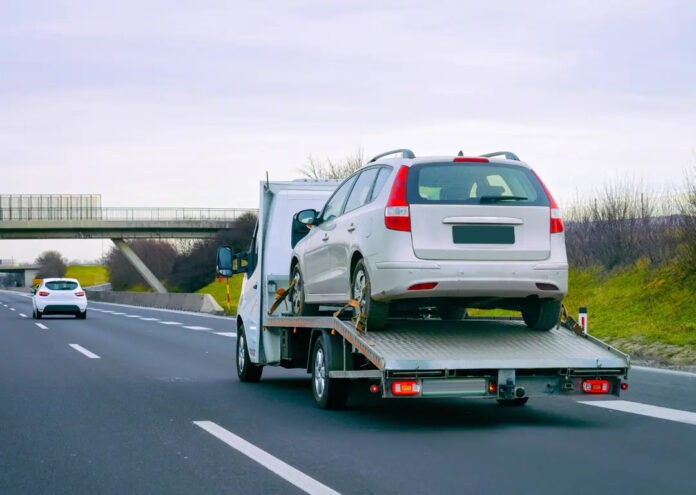Introduction
When it comes to transporting your vehicle, you’re faced with several options, each with its own set of advantages and considerations. Open car transport service is one such option that offers affordability and convenience, but is it the right choice for your vehicle’s journey? In this comprehensive guide, we’ll delve into the intricacies of open car transport, exploring its benefits, potential drawbacks, and factors to consider before making a decision.
Understanding Open Car Transport Service
What is Open Car Transport?
Open car transport involves transporting vehicles on an open-air trailer, typically exposed to the elements and road debris during transit. These trailers are commonly seen on highways, transporting multiple vehicles simultaneously.
How Does Open Car Transport Work?
In open car transport service, vehicles are loaded onto the trailer by professional carriers using ramps or hydraulic lifts. Once loaded, the vehicles are secured in place using straps or wheel chocks to prevent movement during transit. The trailer then transports the vehicles to their destination, typically over long distances.
Benefits of Open Car Transport Service
1. Cost-Effectiveness
One of the primary advantages of open car transport is its affordability. Compared to enclosed transport, which provides additional protection but comes at a higher cost, open transport offers a budget-friendly option for shipping vehicles over long distances.
2. Wide Availability
Open car transport services are readily available across the country, with numerous carriers offering scheduled routes to major cities and destinations. This widespread availability makes it easier to find a carrier and schedule transportation for your vehicle without significant delays.
3. Efficient Timeframes
Open car transport services often provide faster turnaround times compared to other transport options. Since open trailers can accommodate multiple vehicles simultaneously, carriers can optimize their routes to maximize efficiency and minimize transit times.
4. Suitable for Standard Vehicles
Open car transport is well-suited for standard vehicles, including sedans, SUVs, and trucks. These vehicles can withstand exposure to the elements and road debris without significant damage, making open transport a viable option for everyday vehicles.
Drawbacks of Open Car Transport Service
1. Limited Protection
Unlike enclosed transport, which provides protection from weather conditions, debris, and potential theft, open car transport leaves vehicles exposed to the elements during transit. This lack of protection increases the risk of cosmetic damage, such as scratches, dents, and paint chips.
2. Potential for Damage
While professional carriers take precautions to secure vehicles during transport, there is still a risk of damage from road debris, harsh weather, and accidents. Vehicles transported on open trailers are susceptible to flying rocks, gravel, and other hazards encountered on the road.
3. Exposure to Weather Conditions
Open car transport exposes vehicles to weather conditions such as rain, snow, and hail during transit. While most vehicles can withstand moderate weather exposure, severe weather conditions may increase the risk of damage, especially to sensitive components and exterior finishes.
4. Limited Security
Open car transport provides minimal security compared to enclosed transport. Vehicles transported on open trailers are visible and accessible to the public, increasing the risk of theft or vandalism, particularly during stops or layovers.
Factors to Consider Before Choosing Open Car Transport
1. Vehicle Type and Condition
Consider the type and condition of your vehicle before opting for open car transport. Standard vehicles in good condition are well-suited for open transport, while high-value or classic cars may require the added protection of enclosed transport.
2. Budget and Cost Considerations
Evaluate your budget and cost considerations when choosing a car transport service. While open transport offers affordability, it’s essential to weigh the potential cost savings against the risk of damage and consider whether the savings justify the risk.
3. Destination and Route
Consider the destination and route of your vehicle’s journey when selecting a transport service. Ensure that the carrier offers routes to your desired destination and inquire about any potential detours or delays that may affect transit times.
4. Carrier Reputation and Reliability
Research the reputation and reliability of the car transport carrier before making a decision. Look for reviews, testimonials, and ratings from past customers to gauge the carrier’s performance and customer satisfaction levels.
Conclusion
Open car transport service provides an affordable and convenient option for transporting vehicles over long distances. While it offers cost-effectiveness and efficiency, it also comes with potential drawbacks such as limited protection and exposure to the elements. Before choosing open transport for your vehicle’s journey, carefully consider factors such as vehicle type, budget, destination, and carrier reliability. By weighing these considerations, you can make an informed decision that ensures the safe and timely transport of your vehicle.

